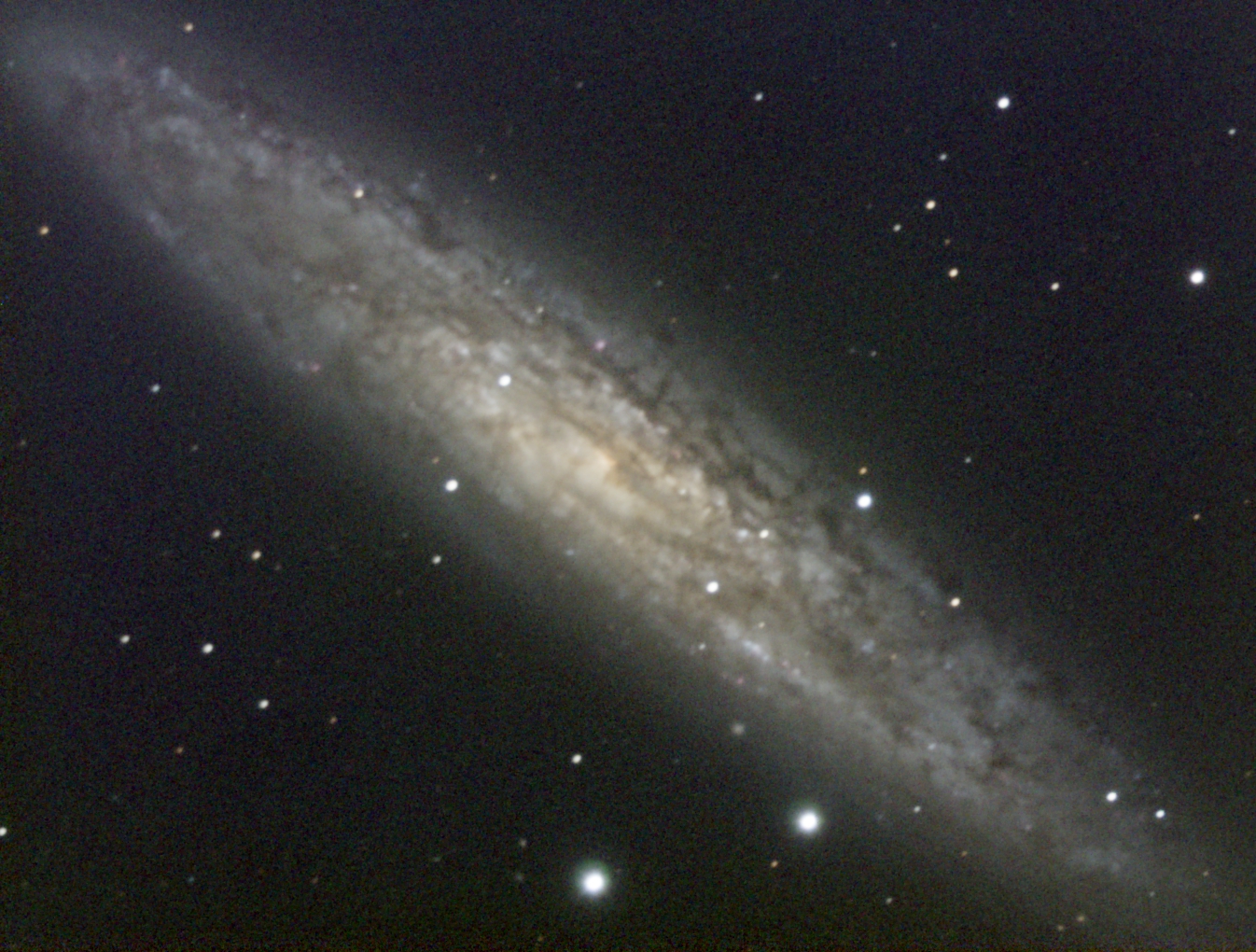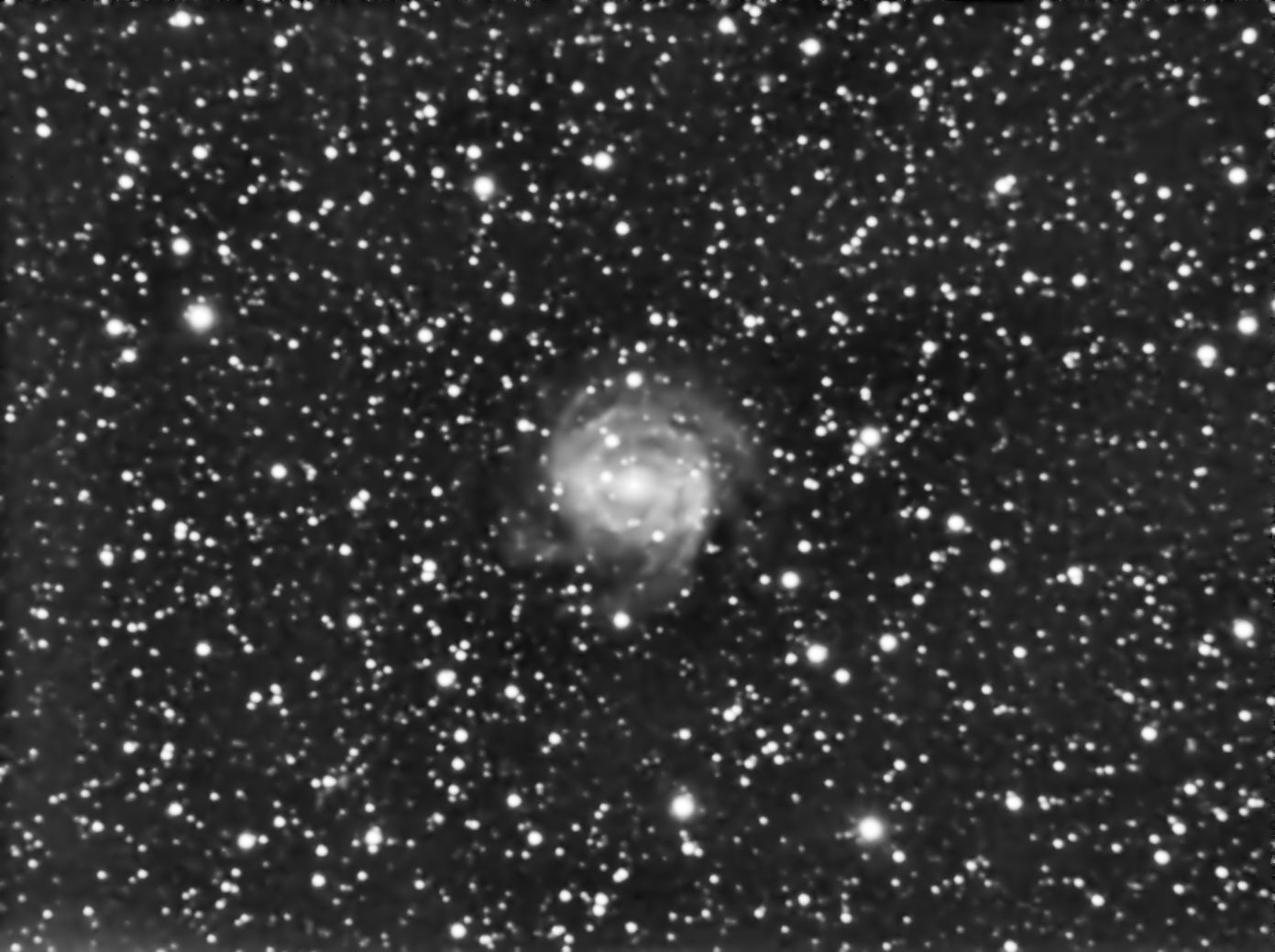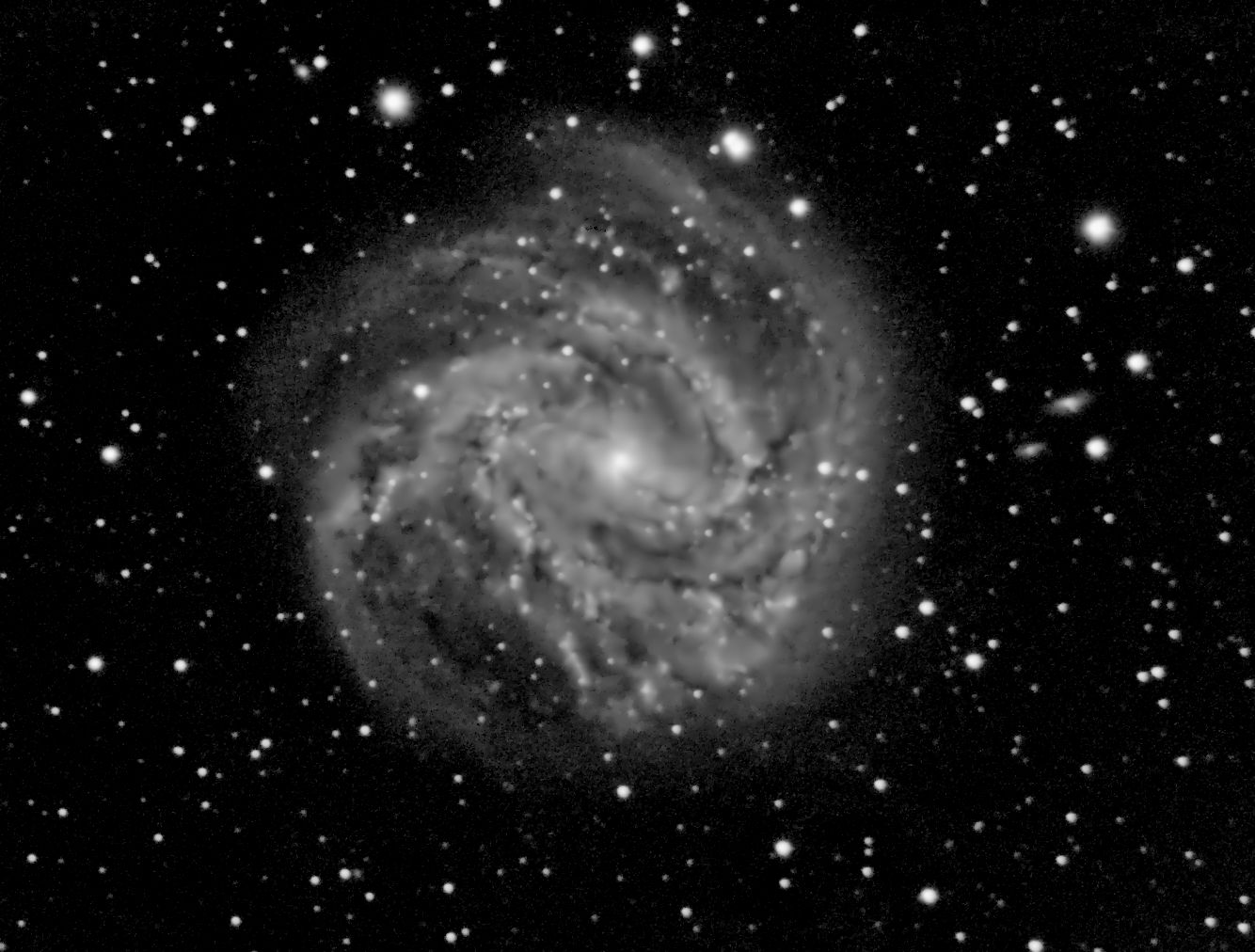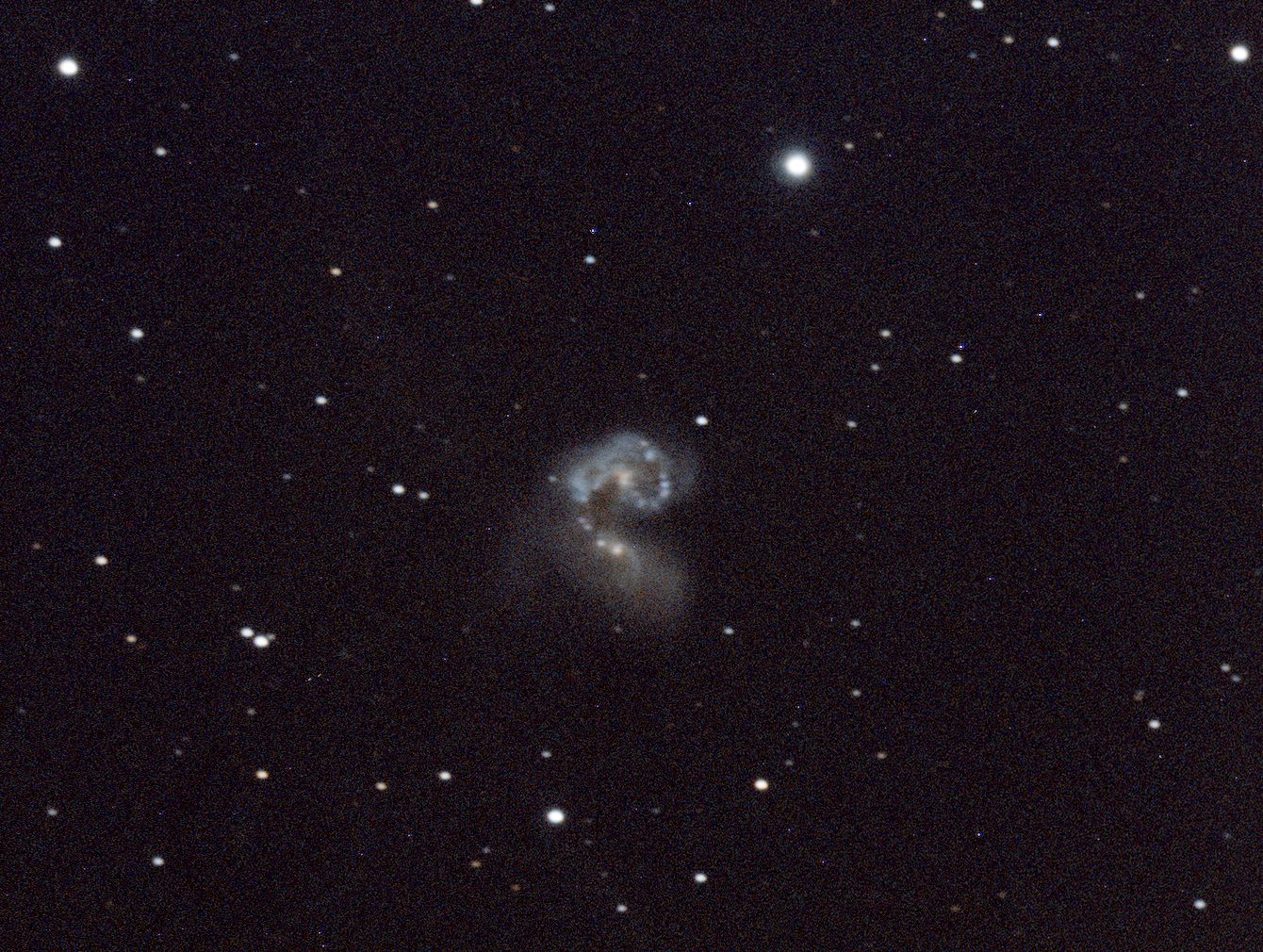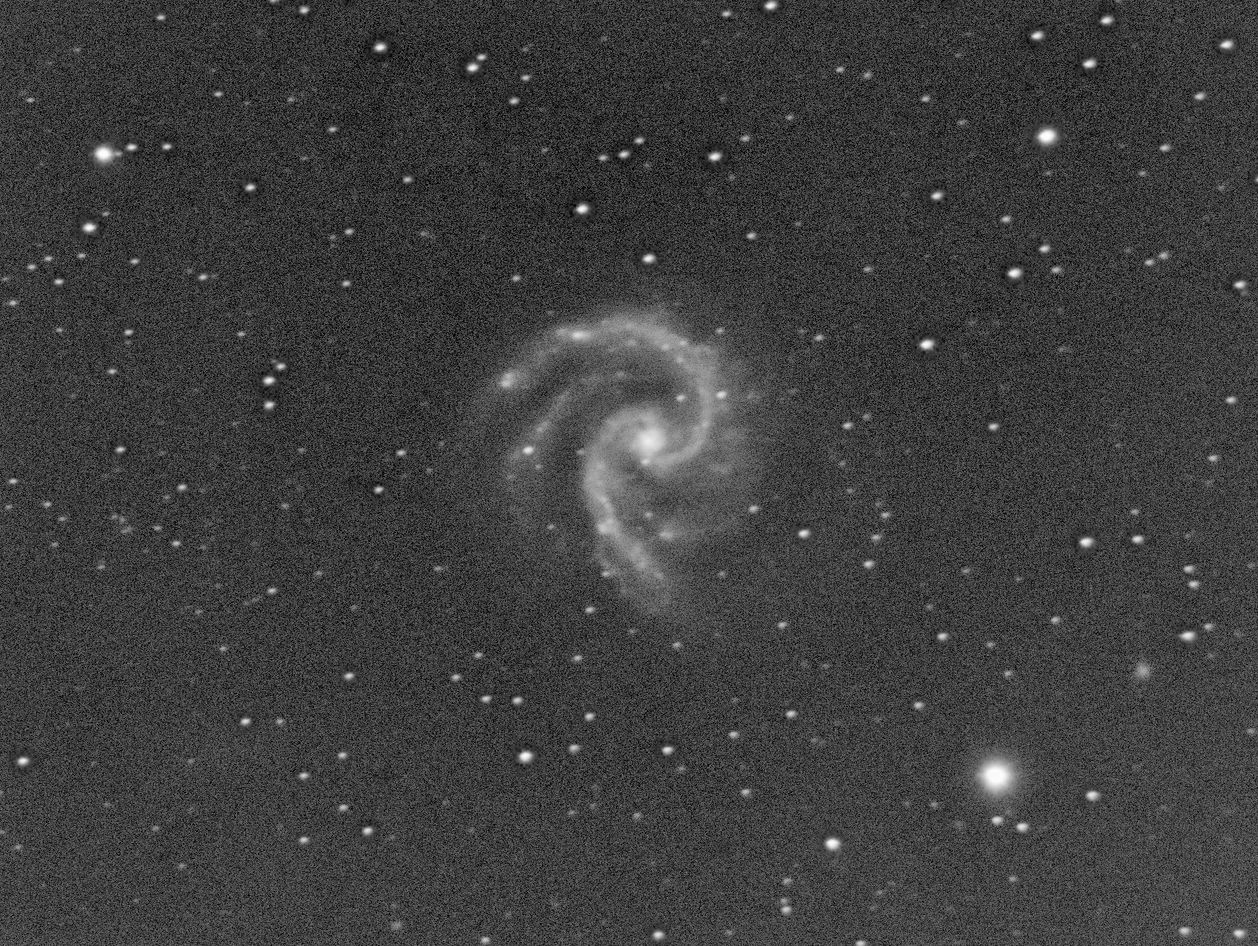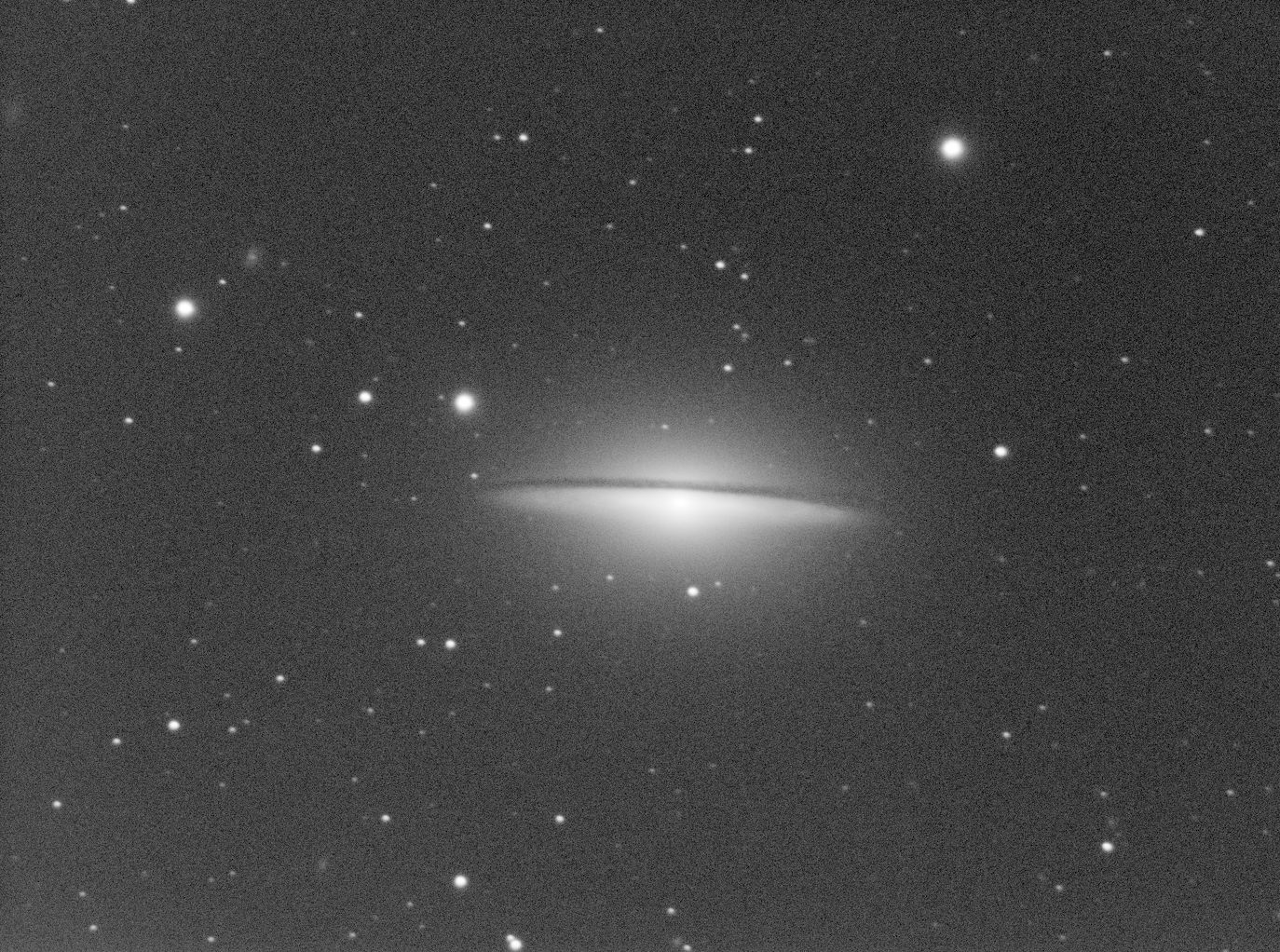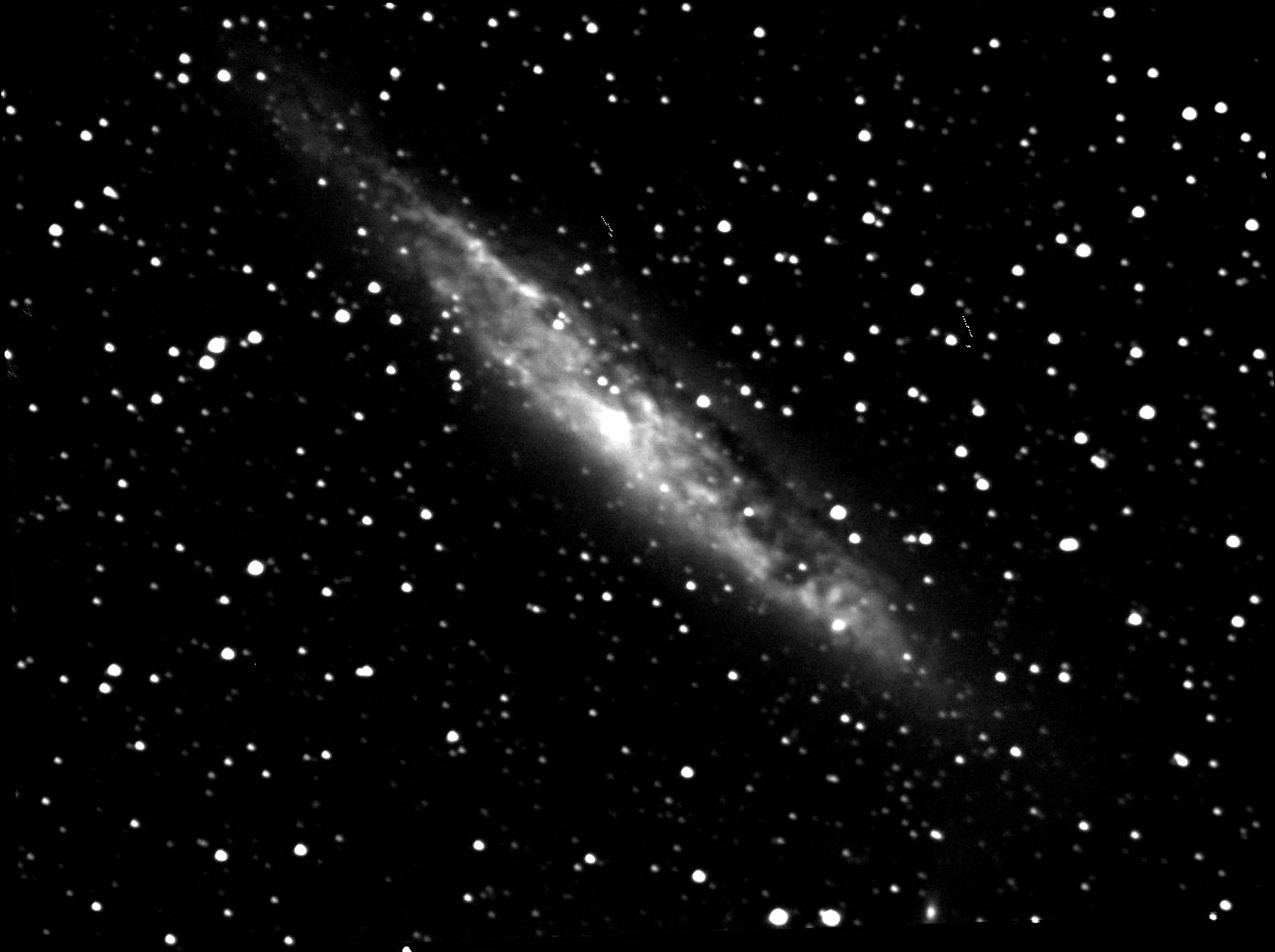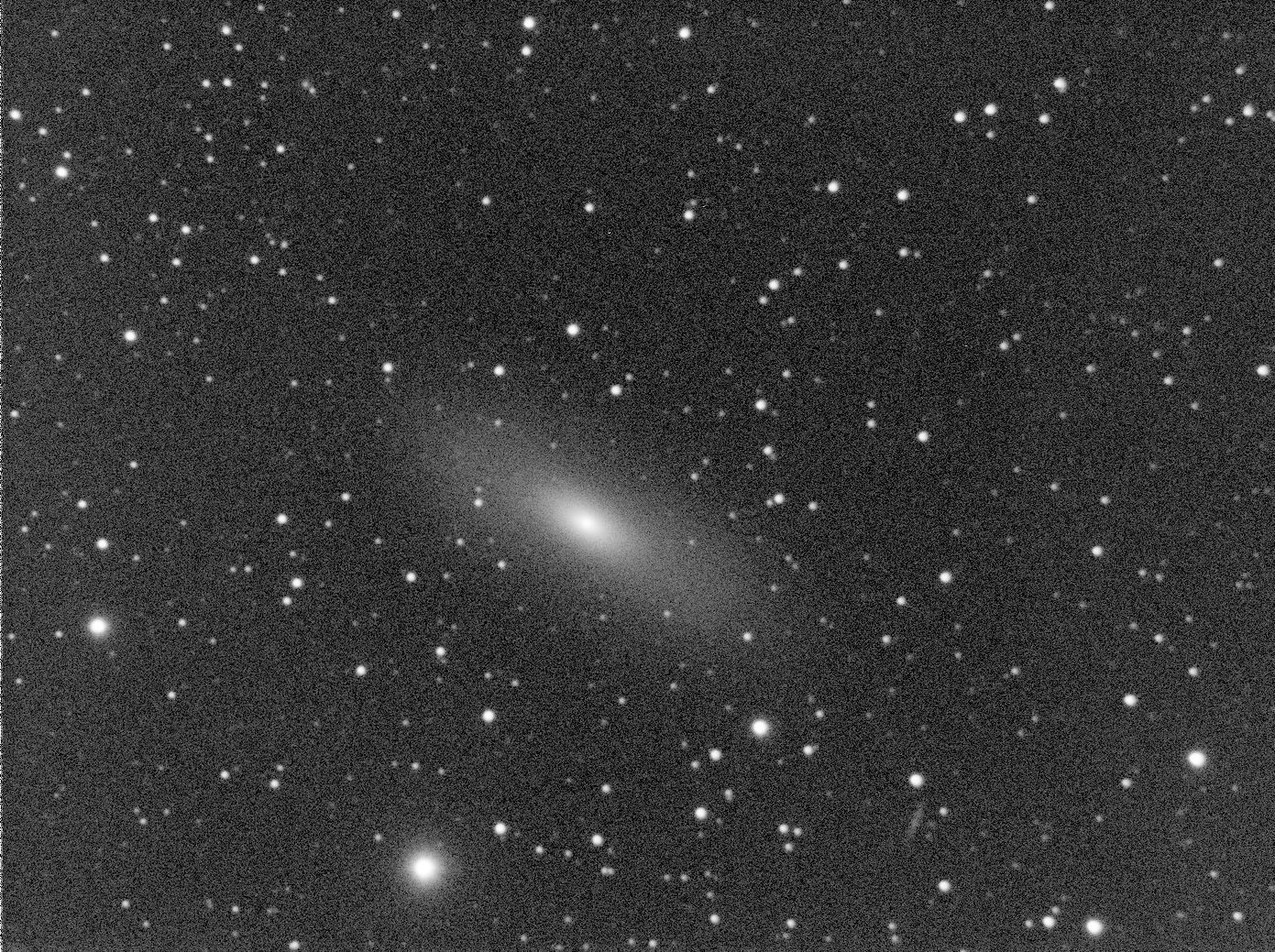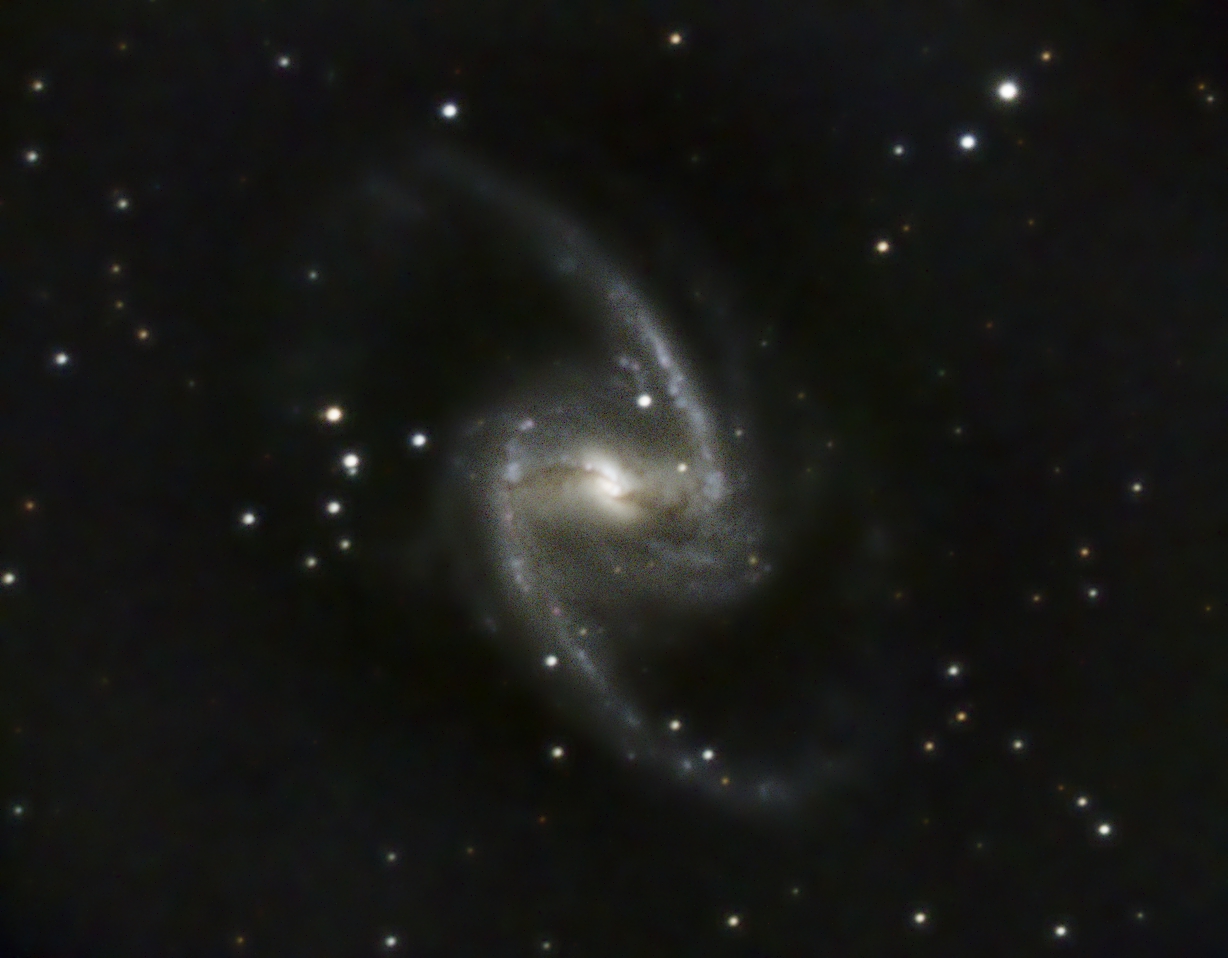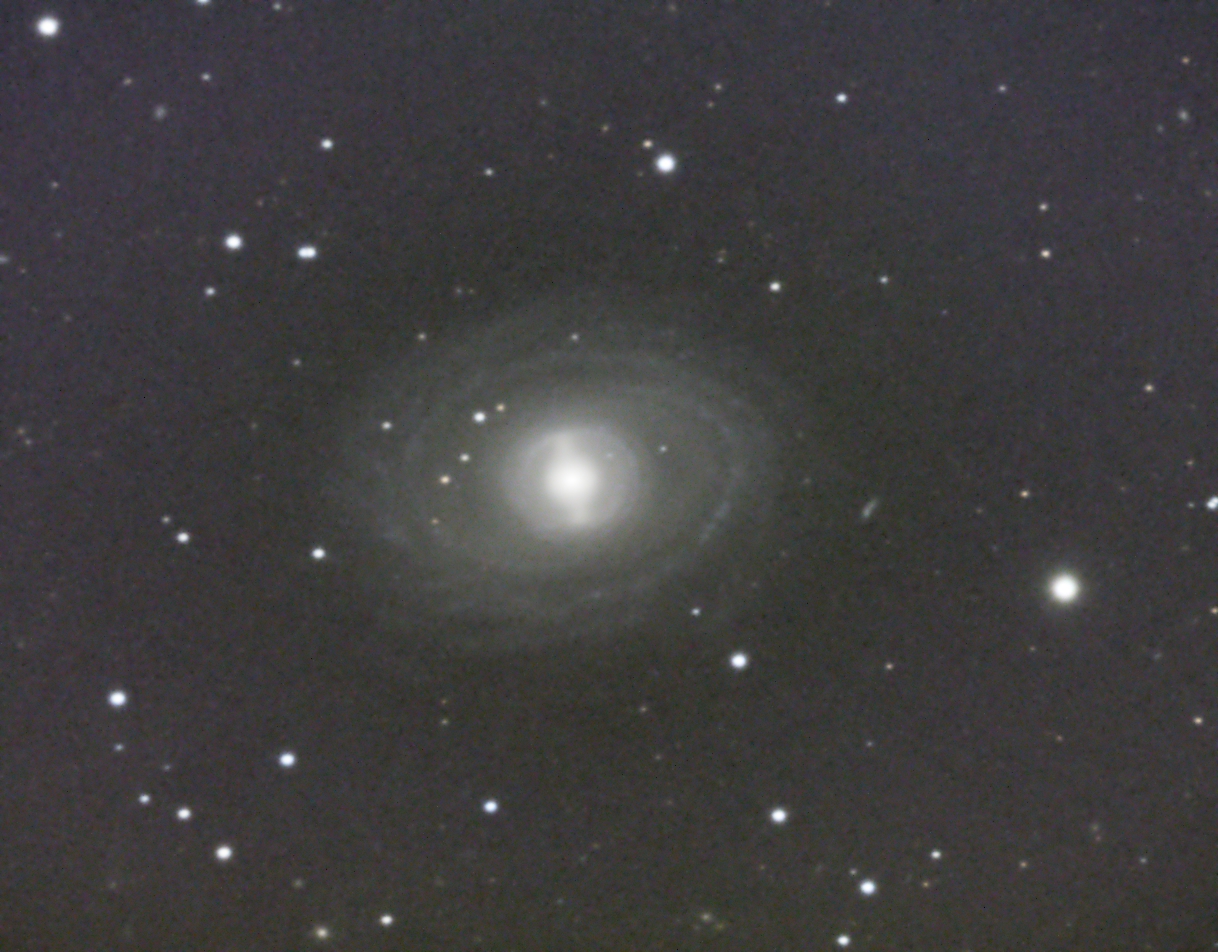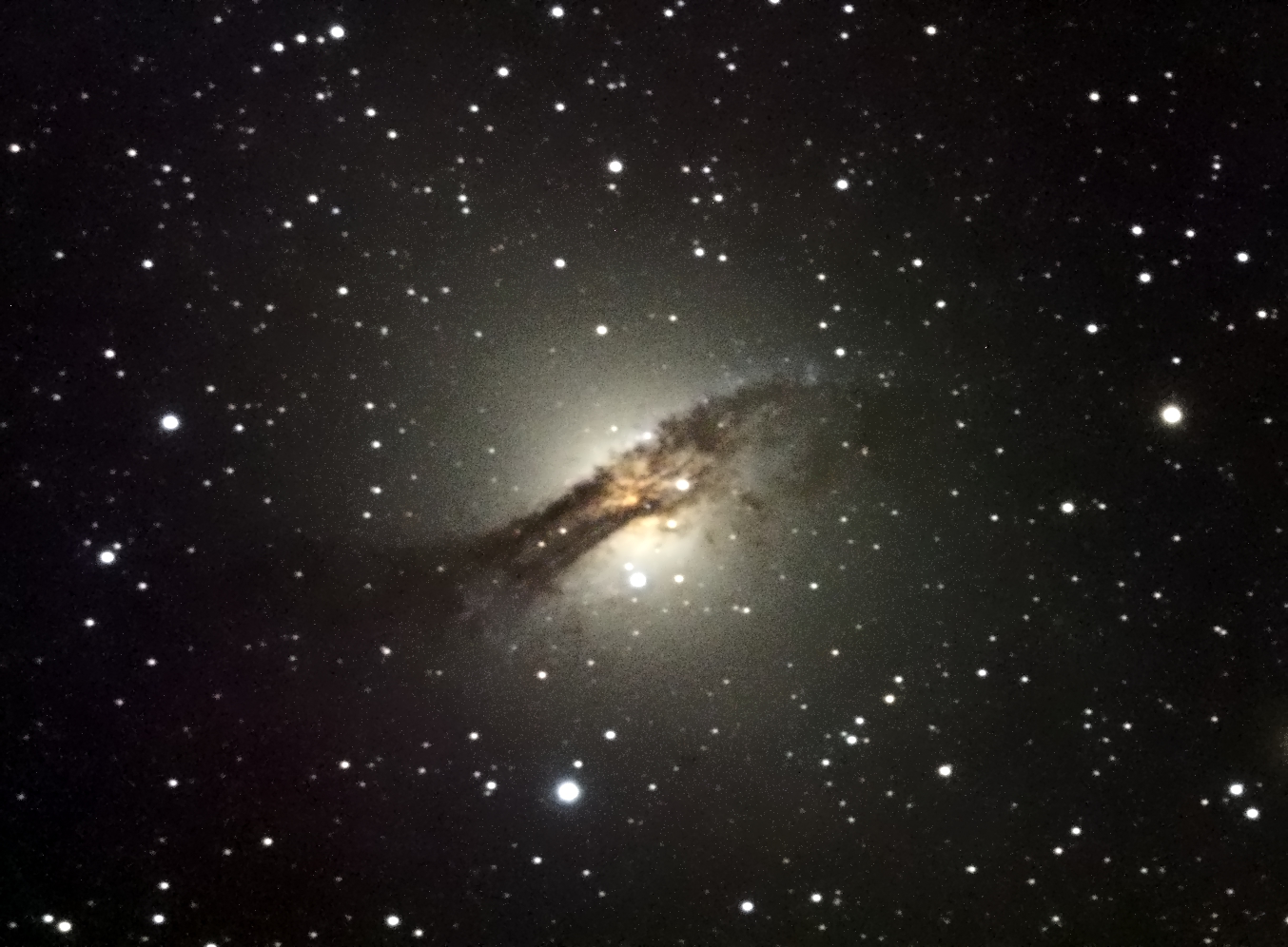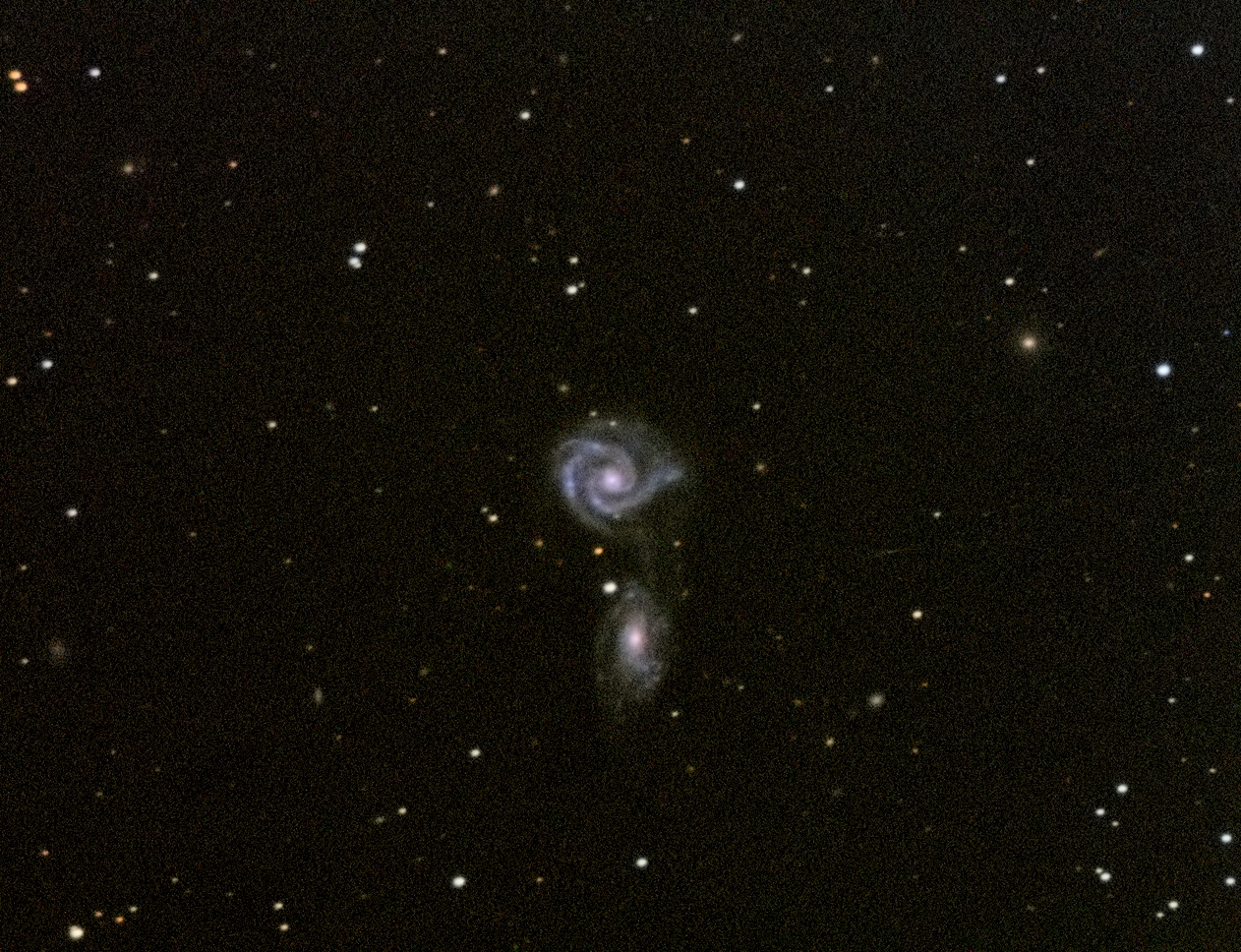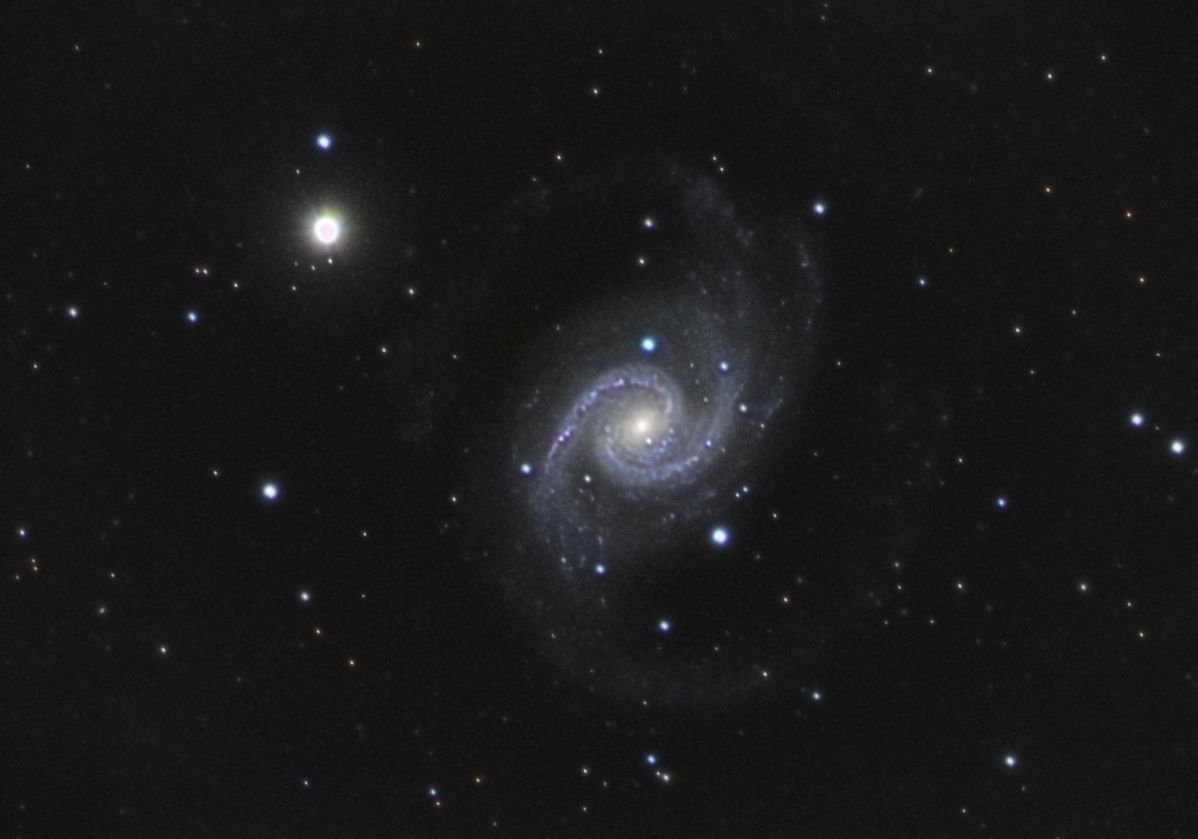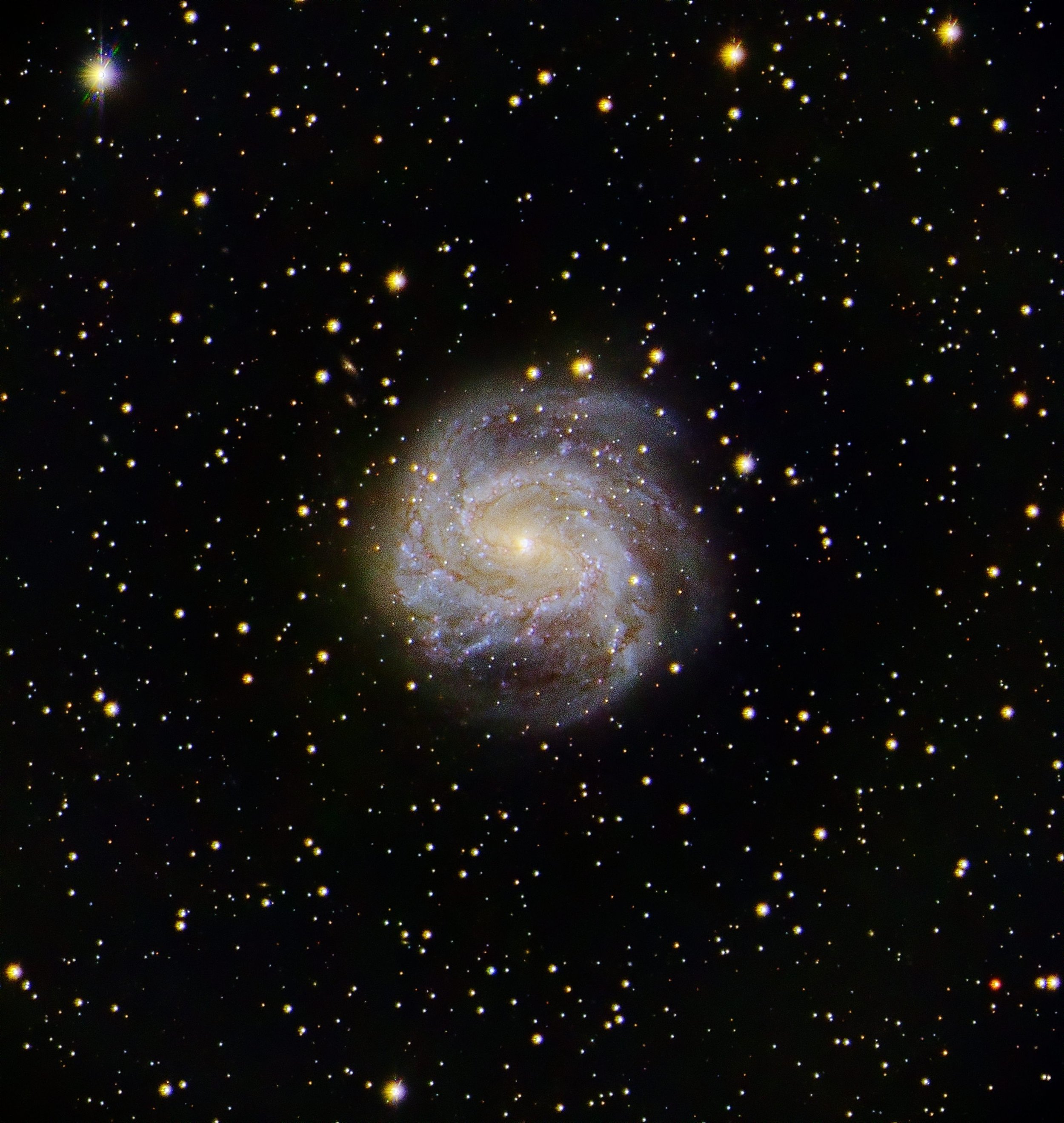The area in Dorado has a special collection of galaxies, and this spiral is one of the best, with an striking structure. Stephen O’Meara in his wonderful guide “Southern Gems” has a detailed description. The pink H2 star forming regions are visible in the inner arms, with strong dust lanes. The faint outer arms are just visible. The bright core, he notes, is likely to have a massive black hole, and emits intense cosmic radiation- an active galactic nuclei AGN. About 10% of galaxies have this feature, called Seyfert Galaxies, after Carl Seyfert, who classified them in 1943, with the observation of the bright, broad, spectral emission lines. It is 60 million light years away.
By coincidence, hours later, an APOD image was posted. They used a remote observatory in Chilie using a 1 meter CDK telescope. I was pleased that my image using a more modest setup with the constraints of inner city light pollution captured many of the details. I am hoping for improved sharpness when I start using my new mount.
It was challenge to process. Good image calibration, deconvolution, and an arcsin stretch was used. All processing was in Pixinsight.
Taken from my observatory in Melbourne, Australia
Image details:
Date: 28 November, 11, 12, 16 December 2021
Exposure: LRGB @ -12C
73 360s (7.3 hours)
19 360s (1.9 hours)
20 360s (2 hours)
20 360s (2 hours)
Telescope: Celestron CGE11 F6.3
Camera: Atik 314L
Filters: Astronomik L-RGB set (1.25") Type 2C
Taken from my observatory in Melbourne, Australia
Center (RA, hms): 04h 19m 57.867s
Center (Dec, dms): -54° 55' 45.495"
Up is 63.4 degrees E of N
